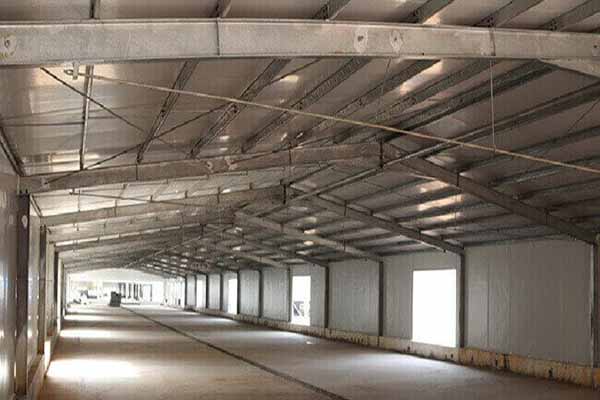Kenya Chicken Farming Equipment Automation Upgrade Plan: Enhancing Efficiency and Productivity
Time : 2025-07-03
The poultry industry in Kenya has been growing rapidly, with chicken farming becoming a significant sector of the agricultural economy. To keep up with this growth and to ensure sustainable production, the implementation of an automation upgrade plan for chicken farming equipment is essential. This article aims to provide a comprehensive guide on how to develop and execute an effective automation upgrade plan for chicken farming equipment in Kenya.
Understanding the Current State of Chicken Farming in Kenya
Kenya’s chicken farming industry has seen considerable advancements in recent years. However, traditional farming methods are still prevalent, and there is a need for modernization to increase efficiency and productivity. The current state of chicken farming in Kenya includes the following aspects:
- Small-scale farms dominate the industry, with larger commercial operations being less common.
- Manual labor is extensively used in feeding, cleaning, and managing the chickens.
- Monitoring and control of environmental factors such as temperature, humidity, and feed intake are often done manually.
Identifying the Need for Automation
The need for automation in chicken farming equipment in Kenya can be attributed to several factors:

- Increased Production Efficiency: Automation can streamline processes, reducing the time and labor required for various farming activities.
- Improved Animal Welfare: Automated systems can provide better control over environmental conditions, reducing stress on the chickens and promoting better growth rates.
- Enhanced Food Safety: Automation can minimize the risk of contamination and disease outbreaks by reducing human contact with the chickens.
- Economic Benefits: Although the initial investment in automation can be high, the long-term cost savings and increased productivity can lead to better economic returns.
Developing an Automation Upgrade Plan
Developing an effective automation upgrade plan involves several key steps:
<img src="https://zp.qualitychickenfarm.com/imgs /hot-weather-management-of-poultry-farm-in-kenya-.jpg” alt=”inserted image”>
/hot-weather-management-of-poultry-farm-in-kenya-.jpg” alt=”inserted image”>
1. Needs Assessment
The first step is to conduct a thorough needs assessment to identify the specific areas where automation can be implemented. This assessment should include:
- Current farming practices and equipment used.
- Challenges faced in the current setup, such as inefficiencies, animal welfare issues, and health risks.
- Objectives for automation, such as increased production, improved animal welfare, and cost reduction.
2. Identifying Automation Solutions
Based on the needs assessment, identify the appropriate automation solutions. Some common automation technologies for chicken farming include:
- Automated Feeders: Systems that provide controlled feeding schedules, reducing the risk of over- or under-feeding.
- Environmental Control Systems: Equipment that monitors and controls temperature, humidity, and CO2 levels.
- Watering Systems: Automated systems that ensure consistent water supply to the chickens.
- Monitoring and Data Analysis Tools: Software that collects and analyzes data on chicken health, growth, and environmental conditions.
3. Budgeting and Resource Allocation
Develop a detailed budget for the automation upgrade plan, including the cost of equipment, installation, and training. Allocate resources effectively to ensure the plan’s success.
4. Implementation Strategy
Create a step-by-step implementation strategy that outlines the timeline and milestones for the automation upgrade. This should include:
- Purchase and installation of equipment.
- Training staff on how to use the new systems.
- Integration of the new systems with existing infrastructure.
5. Monitoring and Evaluation
Implement a monitoring and evaluation process to assess the effectiveness of the automation upgrade plan. Key performance indicators (KPIs) to track include:
- Production output.
- Animal welfare metrics.
- Operational costs and efficiency.
Case Study: Successful Automation Upgrade in a Kenyan Chicken Farm
Let’s consider a case study of a Kenyan chicken farm that successfully implemented an automation upgrade plan. The farm, with a capacity of 20,000 chickens, faced several challenges before the upgrade:
- High labor costs due to manual feeding and cleaning.
- Variable environmental conditions, leading to inconsistent growth rates.
- Lack of real-time data on chicken health and performance.
After implementing an automation upgrade plan that included automated feeders, environmental control systems, and data analysis tools, the farm experienced the following benefits:
- Reduced Labor Costs: The farm was able to reduce its labor force by 30% while maintaining production levels.
- Improved Animal Welfare: The chickens experienced more stable environmental conditions, resulting in better growth rates and reduced stress.
- Increased Productivity: The farm’s production output increased by 15% due to the precision of the automated systems.
Conclusion
The automation upgrade plan for chicken farming equipment in Kenya is a strategic move towards modernizing the industry. By identifying the specific needs, implementing the right automation solutions, and closely monitoring the results, chicken farmers can achieve higher efficiency, improved animal welfare, and increased profitability. The success stories of farms like the one mentioned in the case study serve as inspiration for others to embark on this transformative journey.











